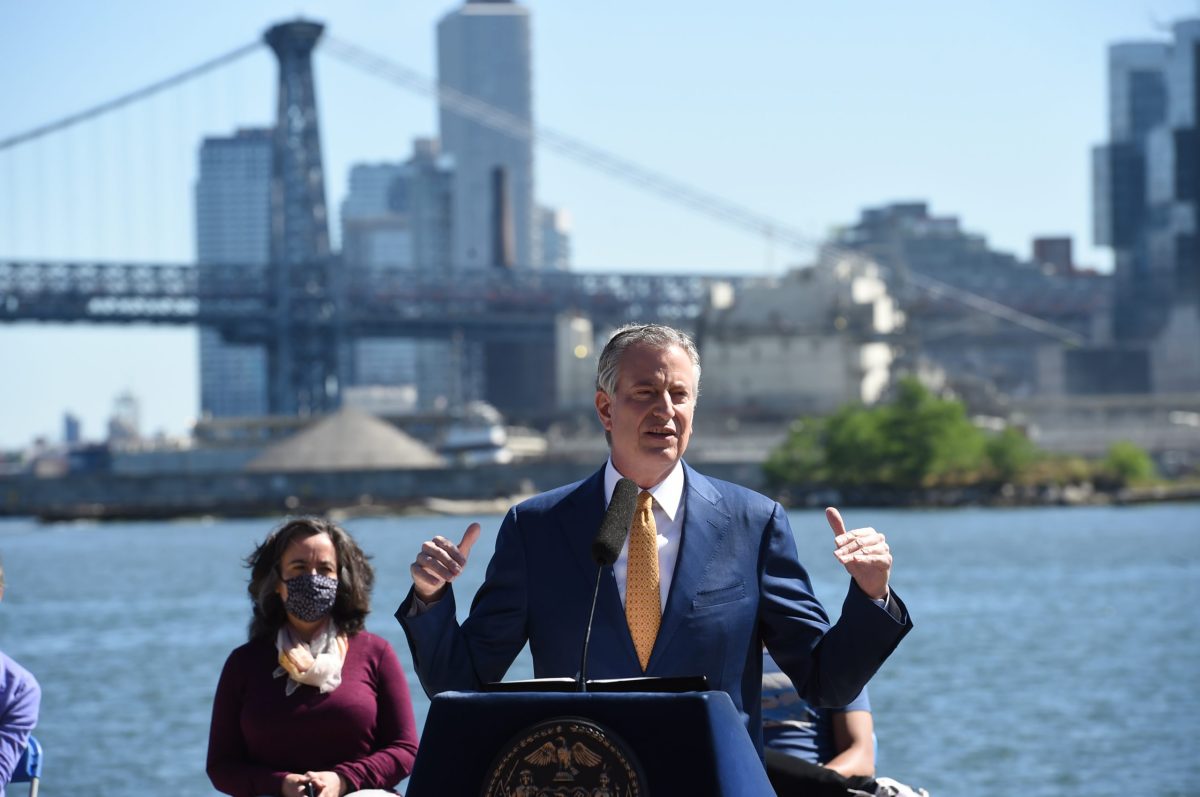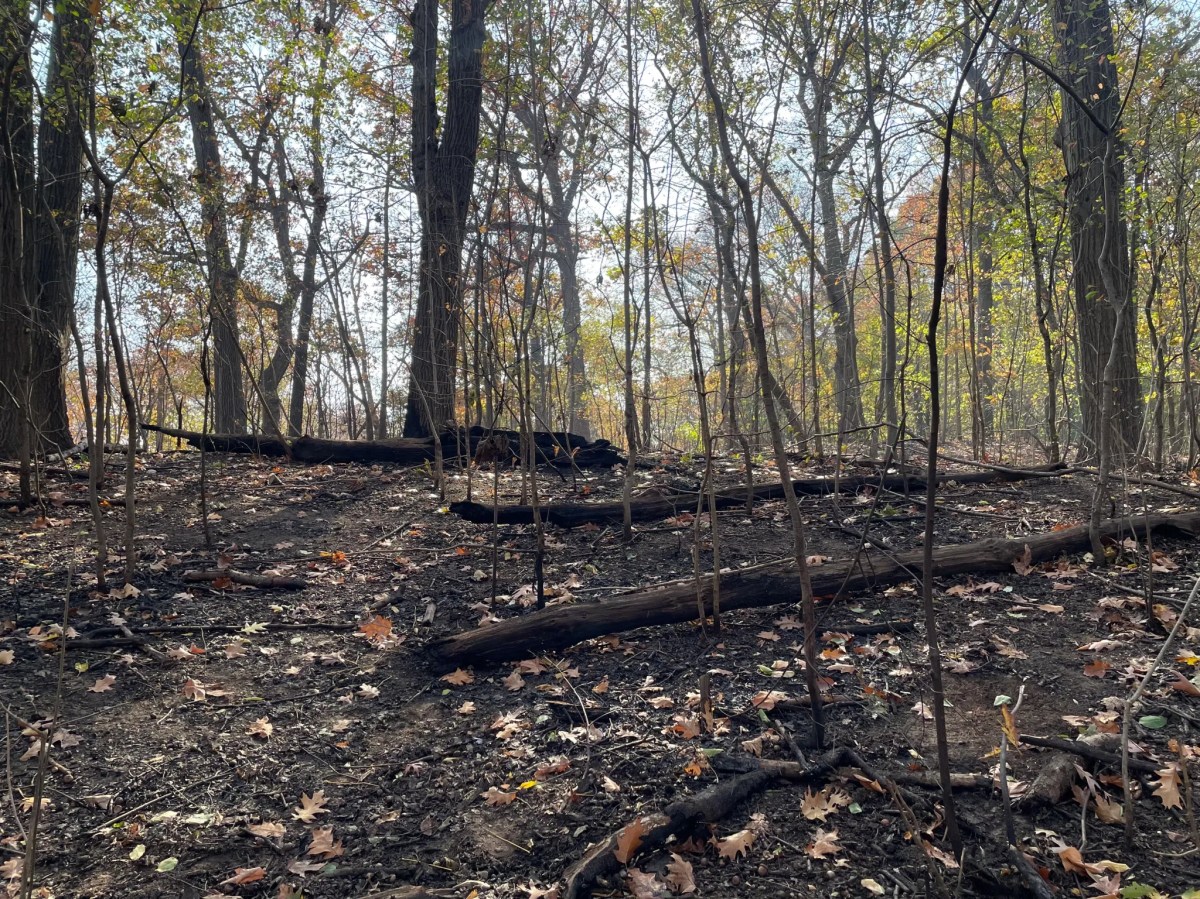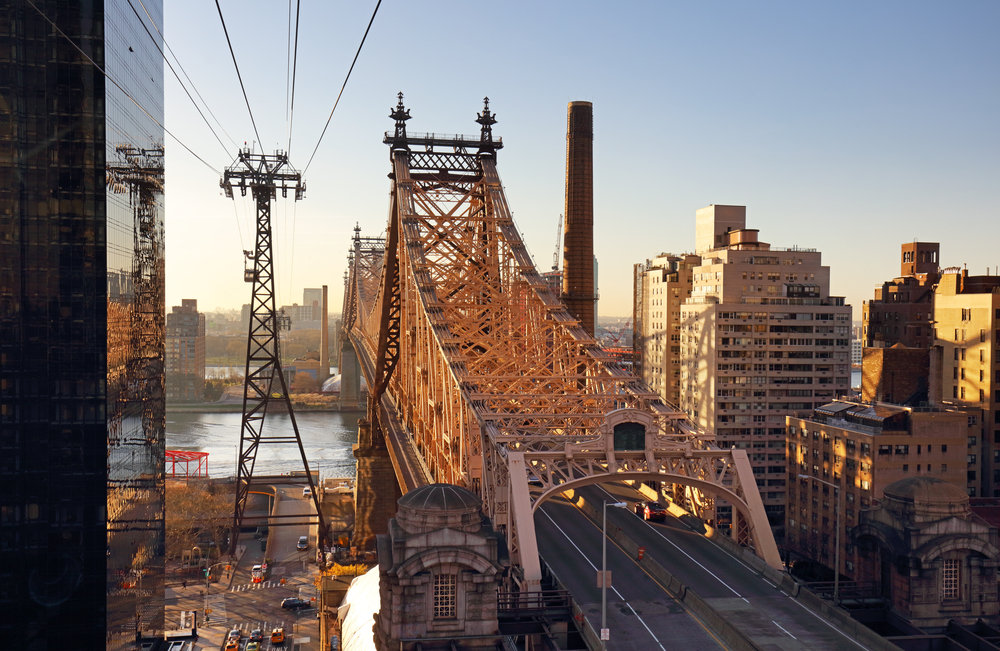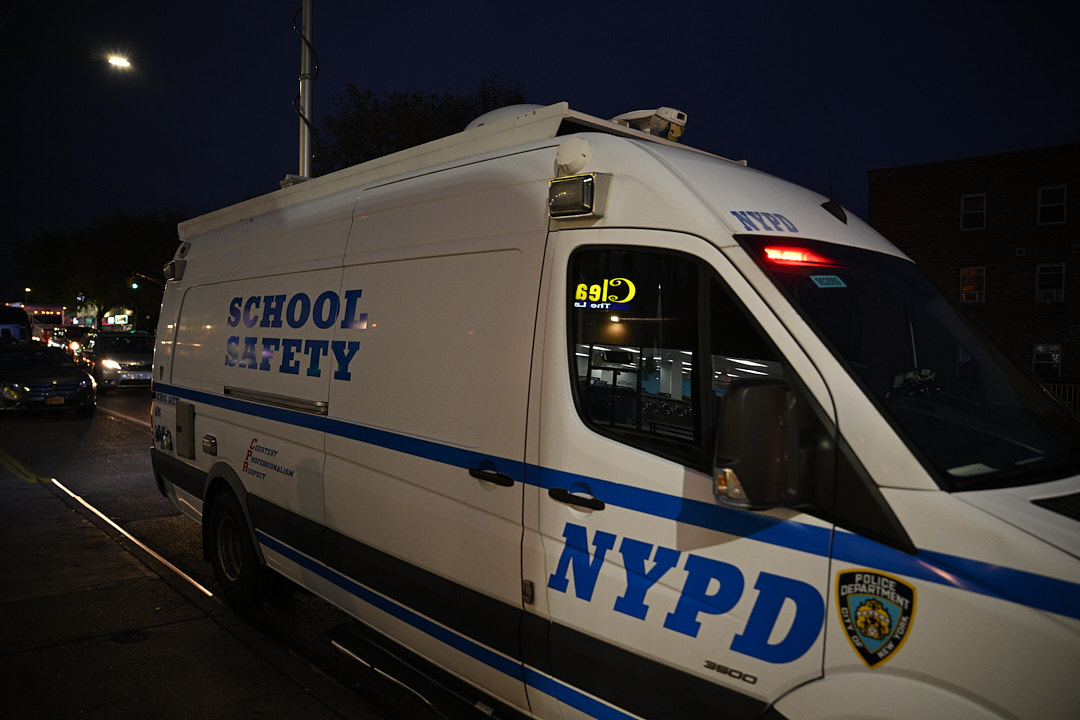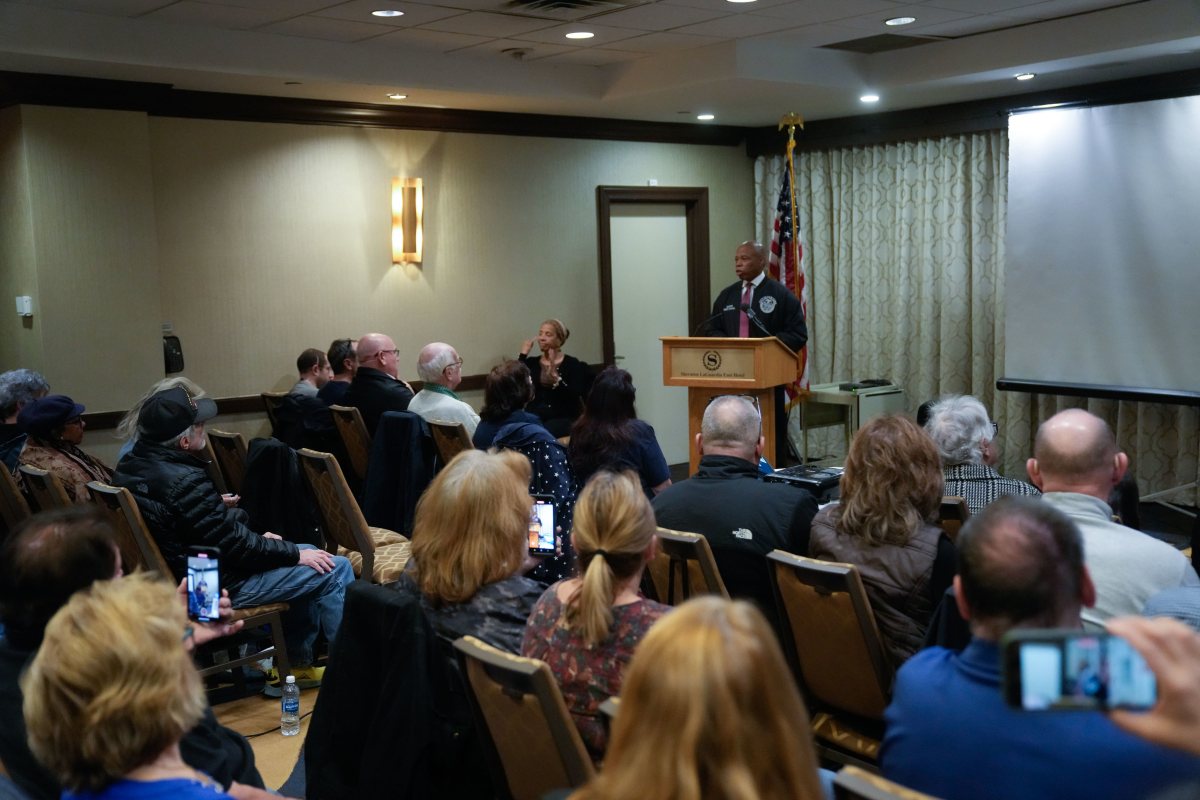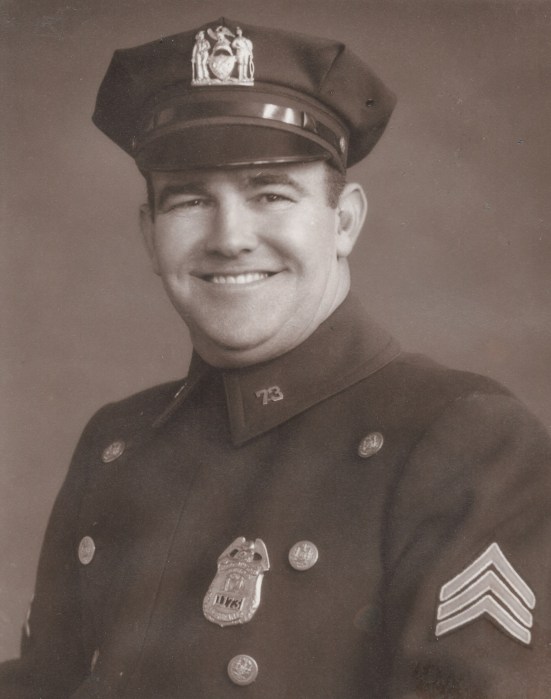The city will open 20 new miles of bus lanes and busways across the five boroughs between now and October to improve commutes for New Yorkers as the city starts its first phase of reopening and eases restrictions due to the COVID-19 pandemic, Mayor Bill de Blasio announced Monday.
“These 20 new miles of busways and bus lanes are going to help over three quarters of a million New Yorkers get around more easily,” said de Blasio at his daily briefing at the Brooklyn Navy Yard on June 8. “Look, more service equals less crowding, equals more health and safety, that’s what we want to achieve.”
City transit gurus will open 16.5 miles of bus lanes and 3.5 miles of busways in the coming five months, starting this month with two lanes in Manhattan and the Bronx and a short new busway in Queens.
The first new busway will run along 0.3 miles of Main Street from Sanford Avenue to Northern Boulevard, and the city will roll out three blocks of bus lanes east of the existing 14th Street busway from First Avenue to Avenue C, and 2.7 miles of lanes in the Bronx on 149th Street, between Southern Boulevard and River Avenue.
In the following months, workers will install busways on Jamaica Avenue in Queens, Jay Street in Brooklyn, and two on Fifth Avenue and 181st Street in Manhattan, each of them between 0.3–1.1 miles long.
The city will also add further bus lanes, including 6.4 miles along Merrick Boulevard in Queens and 6.6 miles on Hylan Boulevard in Staten Island.
On busways, the city bans through-traffic on the street for most of the day, while vehicles can still make pick-ups, drop-offs, and deliveries, but have to turn off the street after a block or two, similarly to the bus-only Fulton Mall in Downtown Brooklyn.
Bus lanes reserve a lane or two for buses for several, usually during the day on weekdays, but still allow car traffic on other lanes at all times.
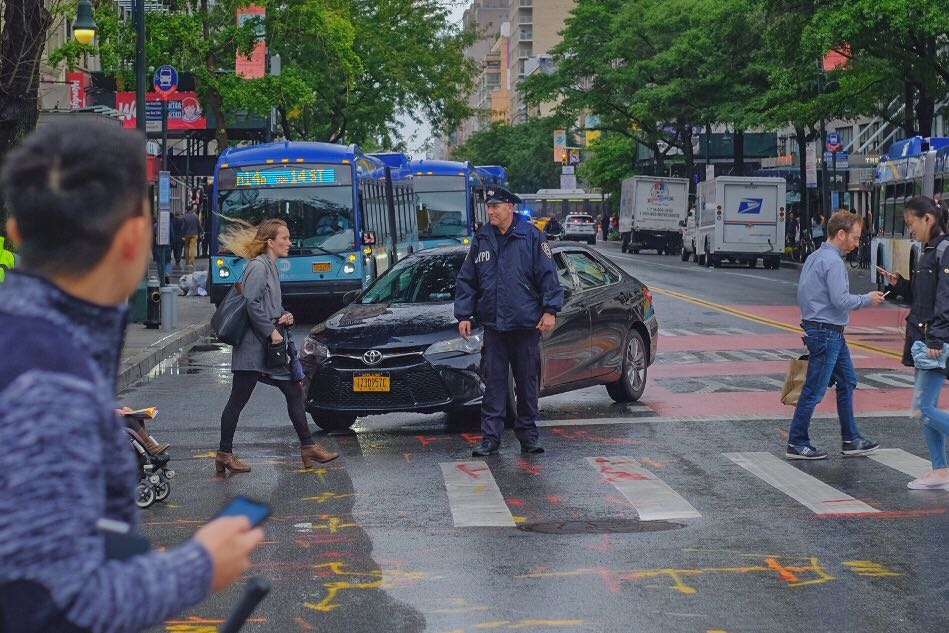
The announcement follows the successful pilot of the 14th Street busway in Manhattan last year and the 20 miles of new red-painted lanes will make traveling faster for almost 750,000 daily riders, according to de Blasio.
The Manhattan thoroughfare prioritized buses October 2019, for a 1.4-mile stretch between First and Ninth streets, upping bus speeds by 24 percent and ridership by 30 percent, according to city officials.
That pilot project will now be permanent, the mayor said, adding that, if the new bus corridors prove to work, they will become permanent too.
But de Blasio’s new scheme fell well short of demands by both the Metropolitan Transportation Authority, whose officials demanded the city add 60 miles of bus lanes, and four out of the five borough presidents, who together with transit advocates demanded City Hall add 40 miles, as bus ridership has become more popular than the subway during the pandemic.
“It’s a step in the right direction, but it’s been clear for the last weeks that mayor was underprepared for this moment,” said Joe Cutrufo, spokesperson for Transportation Alternatives.
The newly-announced lanes also don’t match the proposals transit advocates put out in the last months for busways, and Cutrufo said that like with de Blasio’s Open Streets initiative, he was going for roads that were easiest first.
“Given how this city has approached reclaiming open streets, they tend to go with the lowest hanging fruit first, and that may be the safest way to approach this politically,” he said.
A full list of the new lanes:
Busways:
- Queens: Main Street, Sanford Avenue to Northern Boulevard, 0.3 miles
- Queens: Jamaica Avenue Sutphin Boulevard to 168th Street, 0.9 miles
- Manhattan: Fifth Avenue, 57th to 34th streets, 1.1 miles
- Brooklyn: Jay Street, Fulton and Tillary streets, 0.6 miles
- Manhattan: 181st Street, Amsterdam Avenue to Broadway, 0.6 miles
Bus Lanes:
- Manhattan: 14th Street, First Avenue to Avenue C, 0.8 miles
- Bronx: 149th Street, Southern Boulevard to River Avenue, 2.7 miles
- Queens: Merrick Boulevard: Hillside Avenue to Springfield Boulevard, 6.4 miles
- Staten Island: Hylan Boulevard, Lincoln and Nelson avenues, 6.6 miles



